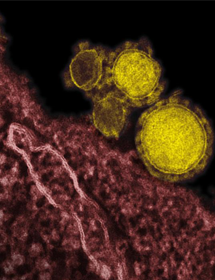
Author: Cara N. Wilder, PhD
Determining the detection limit is an essential part of infectious disease assay development and design. Here, we will discuss the importance of determining the detection limit in establishing analytical sensitivity, and will provide information on how to establish this parameter when evaluating your experimental design.
During the development of an assay or diagnostic method used to determine the presence of a specific pathogen, it is important to establish how effectively the assay can detect lower concentrations of the target strain—particularly if the strain has a low infectious dose. This critical part of infectious disease assay development is often termed the limit of detection (LOD), and can be defined as the minimum amount of the target strain or DNA sequence that can be reliably distinguished from the absence of the sample within a given level of confidence (ex. 95% confidence level).1-2
The methods used to establish LOD can vary depending on assay type and use. For example, the LOD of a particular instrument-based system is measured with either a pure culture or nucleic acid sample. In contrast, when analyzing clinical or environmental LOD, quantified samples are spiked into an appropriate matrix (eg, soil, water, blood, feces) and are then analyzed following various recovery and concentration procedures. Compared to determining an instrument LOD, examining clinical or environmental LOD is often associated with a number of challenges including the potential for environmental inhibitors, loss of the organism, or the presence of impurities. At each step of the recovery process, there is the potential for sample loss, which directly affects the LOD; thus, for these types of assays, improving process efficiency is imperative for ensuring assay sensitivity.
When analyzing the analytical sensitivity of an assay, the significance of your results can be dependent on the dilution range used as well as the number of replicates. Prior to your analysis, it is important to first quantify your samples, or obtain authenticated samples with a pre-established concentration. Following the quantification of your control samples, each sample should be serially diluted around an appropriate concentration that was previously determined through a range finding study. Depending on the assay, the dilution series may vary in the number of dilutions used (ie, the number of samples) as well as the extent of the dilution (ie, 2x, 5x, 10x, etc.). The closer you can get the dilution series around your target concentration, the more accurately you will be able to determine your LOD. Once your dilution series is prepared, each dilution should be tested against your assay in replicate (at least 20-60 times).
Products for infectious disease assay development
Molecular Diagnostic Tools
We provide a variety of ready-to-use standards that can be used throughout the assay development process. Explore our collection of molecular standards and inactivated organisms for molecular diagnostics development.
Infectious disease research
To develop the diagnostic tools needed to quickly and accurately identify pathogens, researchers need access to highly characterized reference materials. Discover how ATCC’s portfolio of authenticated microorganisms can help.
For example, let’s say you wanted to develop an end-point PCR-based approach for identifying Clostridioides difficile in stool samples. When analyzing the LOD of your assay, you would first want to acquire strains representing the major known toxinotypes, and then quantify the concentration of each culture preparation. Following a range finding study, you would then prepare an appropriate dilution series for the samples and spike each dilution into a stool sample. Following suitable recovery and concentration procedures, at least 20 replicates for each dilution should be tested for identification by your PCR-based system as well as confirmed by colony counting.
When obtaining strains for determining the limit of detection, it is important to go to a reliable source that provides authenticated reference standards that are titered or quantitated. This will ensure that your strains are well-characterized, as well as accurately quantified for concentration or genome copy number. At ATCC, we maintain a portfolio that expands a vast variety of microorganisms and nucleic acids that are quantified by commonly used methods including PicoGreen, RiboGreen, Droplet Digital PCR, spectrophotometry, or culture-based approaches. Moreover, ATCC Genuine Cultures and ATCC Genuine Nucleics are fully characterized using a polyphasic approach to establish identity as well as confirm characteristic traits, making them ideal for determining the detection limit of your assay.
Overall, determining the detection limit is critical in assay development and validation. Through the use of a diverse array of authenticated strains and nucleic acids that are accurately quantified, assay sensitivity can be established.
Download a PDF of this white paper
Download Now

